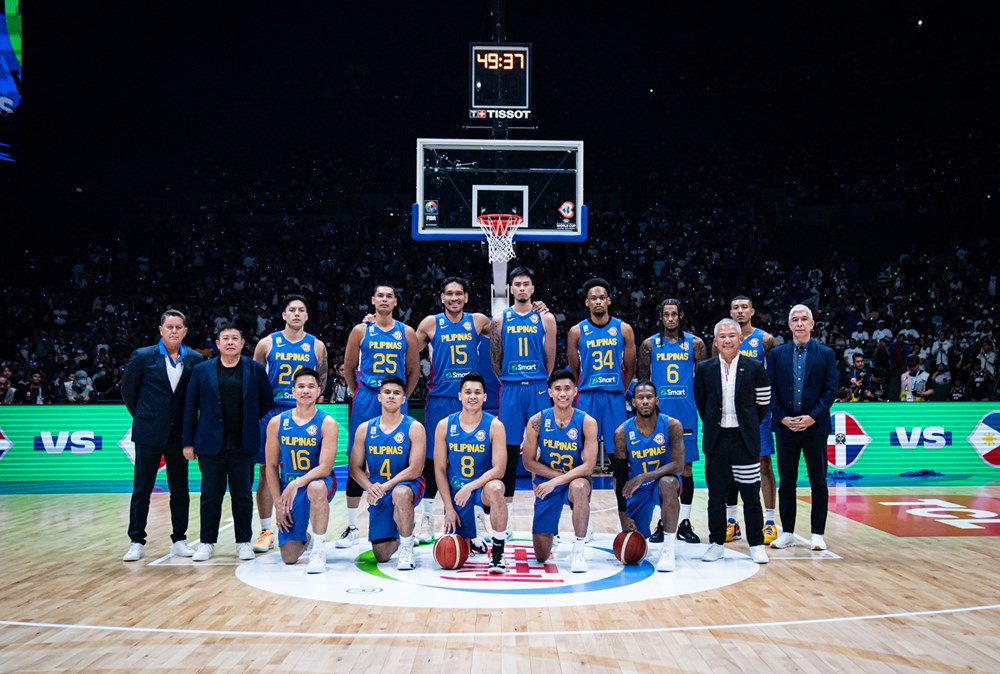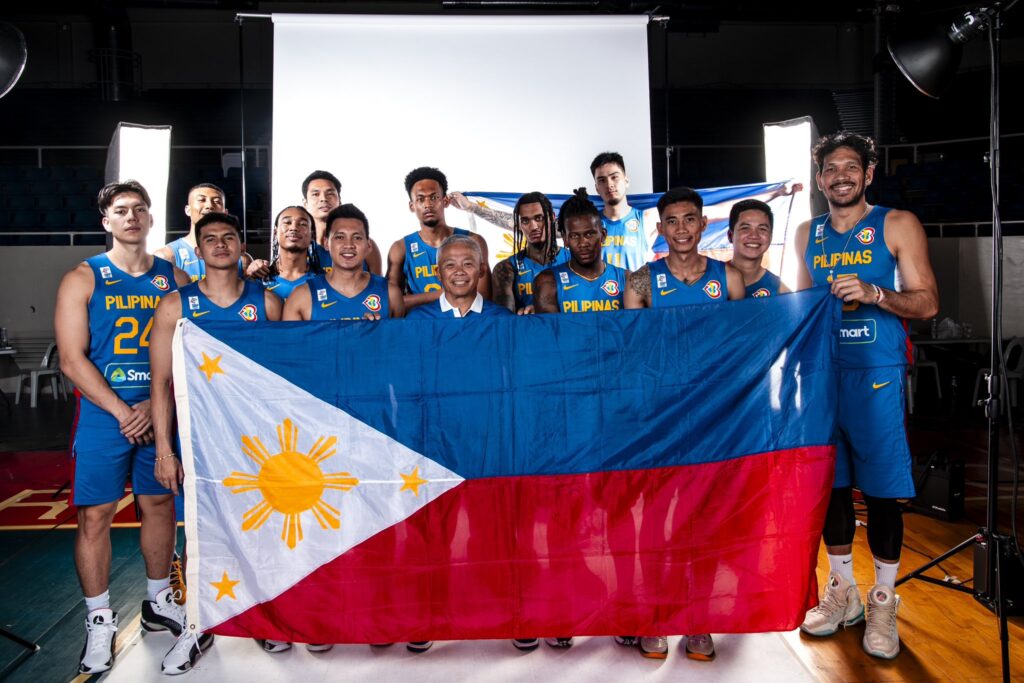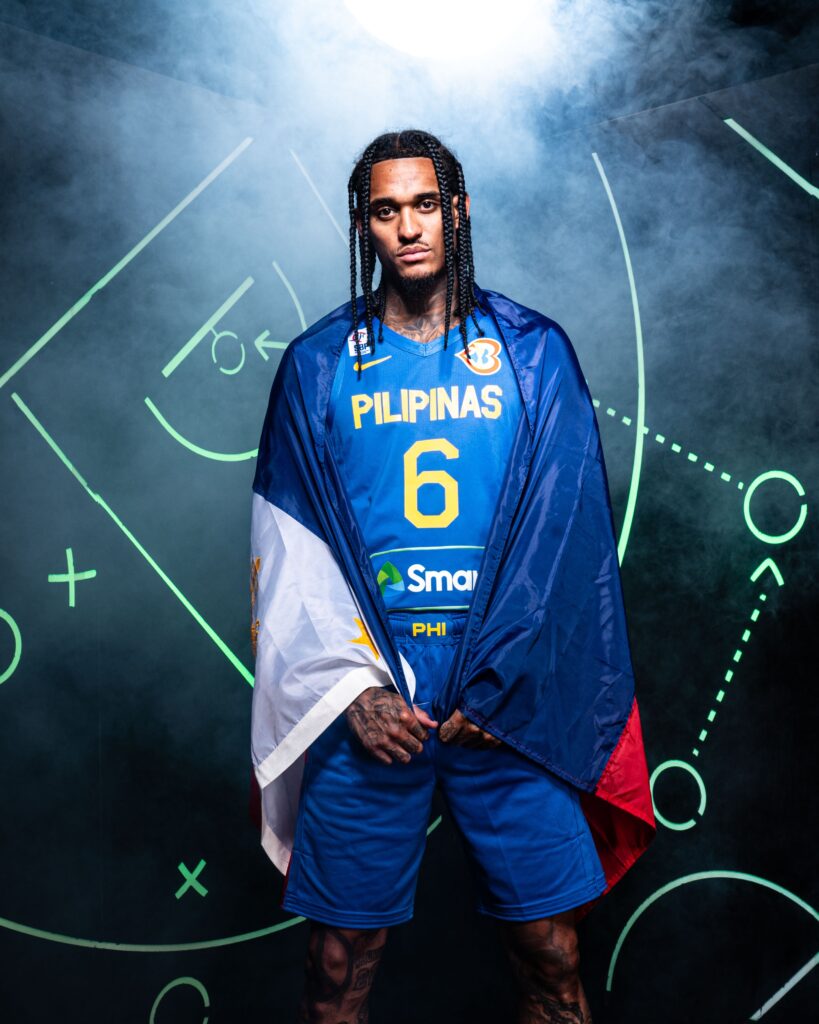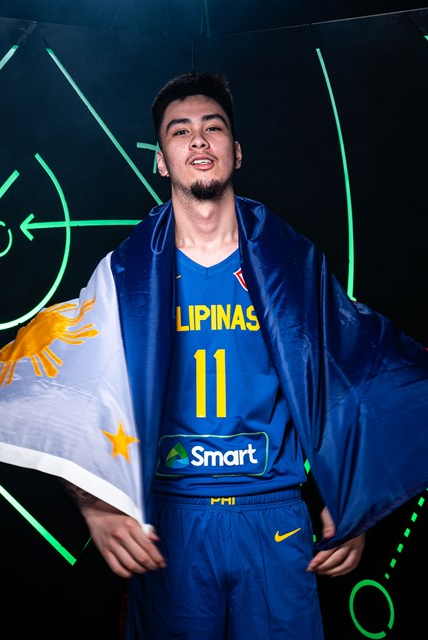
The Philippines began Group A play at the 2023 FIBA Basketball World Cup in Bocaue at the Philippine Arena on Friday the 25th against the Dominican Republic.
The Philippines also played against Angola on Sunday the 27th and is scheduled against Italy on Tuesday the 29th — both at the Araneta Coliseum in Quezon City.
All Philippines games will be at 20:00 local time.

How did the Philippines Get Here?
1954 was a glorious year for Philippine basketball, as Gilas Pilipinas finished 3rd place at the World Championship —the highest finish by any nation outside of Europe and the Americas to date.
However, we are a long way from that ‘golden era’ when the Philippines could proudly stand among the best three nations in the world!
The Philippines did continue to achieve high points in basketball through the 1980s, winning five golds at the FIBA Asia Cup in 1960 (Philippines), 1963 (Chinese Taipei), 1967 (South Korea), 1973 (Philippines), and 1985 (Malaysia), two silvers in 1965 (Malaysia) and 1971 (Japan), and 1 bronze in 1969 (Thailand).
On the world stage, the Philippines continued to place respectable finishes including their 8th place finishes in 1959 (Chile) and 1978 (Philippines). Combined with their Olympic finishes of 5th in 1936 (Berlin), 7th in 1952 (Helsinki), 9th in 1956 (Melbourne), and 13th place in 1972 (Munich), no one could guess what would happen to Gilas Pilipinas next!
After 1985, the Philippines fell off the map of superpower basketball nations, failing to qualify for any world event and failing to medal at any FIBA Asia Cup for nearly three decades!
This started with the Philippines withdrawing from the 1986 FIBA World Championship in Spain which the Filipinos had qualified for via their 1985 Asia Cup Gold, and then continued with very bad performances at major continental events.
It was a period of immense hopelessness for the Philippines as they saw PR China take over basketball in Asia completely, winning gold in 14 of 16 Asia Cups, with other nations soaring far past the Philippines including South Korea, Japan, Chinese Taipei, Saudi Arabia, Qatar, and especially Iran.
Yet, that mostly changed in 2013. For the first time since 1973, the Philippines were given the right to host the FIBA Asia Cup, and Gilas Pilipinas did not disappoint earning silver and thus qualifying for the 2014 FIBA World Cup, where they were able to win their first game since 1959 at the event, going 1-4. In 2015 (PR China), the Philippines were able to once again earn the silver medal at the Asia Cup but failed to qualify for the world event the following year this time: the 2016 Olympics. The Philippines responded with a qualification to the 2019 FIBA World Cup (PR China), but this was seen with immense disappointment as the Philippines finished 32nd out of 32 nations.
Gilas Pilipinas’ recent FIBA Asia Cup results have not been any better with 7th and 9th place finishes in 2017 (Lebanon) and 2022 (Indonesia) respectively.
But, it was that surge of three straight good years from 2013-2015 of Gilas Pilipinas Basketball that earned them the right to host the 2023 World Cup guaranteeing the Philippines a third straight World Cup qualification on December 9, 2017. And that is how we got to the Philippines playing Angola just this Friday at the world’s largest basketball-specific arena in the world: Philippine Arena.

Do the Philippines have a realistic shot to advance?
Yes, the Philippines head into the World Cup with a good lineup featuring star Utah Jazz guard, Jordan Clarkson, and NBA prospect center, Kai Sotto, who stands at 2.21 meters tall (7 feet 3 inches)!
In addition to these two players, the Philippines has many experienced players such as June Mar Fajardo, CJ Perez, Scottie Thompson, and Kiefer Ravena.

World Cup 2023 / Twitter)

These players when playing together did well against Montenegro in an 87-102 loss, before an 85-62 win over the Ivory Coast. The Philippines’ last warmup exhibition was against Mexico, a 77-84 loss without Jordan Clarkson playing. Despite these slumps, this has brought Gilas Pilipinas confidence because at full strength, the Philippines would have probably defeated Mexico, a team that has beaten the Dominican Republic on numerous occasions.
As for the Philippines’ Group A foes,
Italy (#10) is the highest-ranked opponent and while they feature some in their team who finished 5th at the 2020 Olympics and 10th at the 2019 World Cup such as Luigi Datome, they are missing most of their other key players such as Danilo Gallinari, Daniel Hackett, Marco Belinelli, Alessandro Gentile, Jeff Brooks, and Nico Mannion. The players back, besides Luigi Datome, are Stefano Tonut, Nicolò Melli, Simone Fontecchio, Giampaolo Ricci, Alessandro Pajola, and Achille Polonara. Still, it is Simone Fontecchio who was the best Italian basketball Olympian two summers ago, and the national team is performing much better than the Philippines. They finished in 8th place just last summer in EuroBasket.
The Dominican Republic (#23) is a national team many experts expect to be the #2 team in Group A once the tournament starts because they have their marquee star for the first time since 2012, 3x NBA All-Star Karl-Anthony Towns. In addition, other key players include Golden State Warrior, Lester Quinones, and plenty of high-level European and Americas-based players like Jean Montero, Ángel Delgado, LJ Figueroa, and Gelvis Solano.
Angola (#41) is considered the 4th team in Group A, but Angola also features some very good players including Atlanta Hawks’ Bruno Fernando, as well as Islando Manuel, Gerson Gonçalves, and Childe Dundão.
The Philippines (#40) match up most evenly with Angola, however, the Philippines can upset both Italy and the Dominican Republic if they can exploit their huge advantage in FIBA play: superior guards.
Guards are a big deal in FIBA play and are often the difference between teams progressing and teams falling off. In Group A, the Philippines have the best guard in Jordan Clarkson.
In addition, having height is often important, and the Philippines have a very tall lineup with their forwards. This will help the Philippines rim-protect against their opposition, and get much-needed rebounds.
In the past, the Philippines neither had the height nor the guard play their current team has.
Gilas Pilipinas may still be expected to finish 3rd and get eliminated, but they should play close against all nations in Group A. And if the games are close and are in the Philippines, it is very realistic to see Gilas Pilipinas advance to the Second Round.
If the Philippines are to advance, they would play the top 2 teams from Group B (#62 South Sudan, #6 Serbia, #27 PR China, and #20 Puerto Rico), with their game against the other top 2 teams from Group A in the First Round carrying over to the Second Round standings. The top 2 teams from this Second Round Group I will then head to the Quarterfinals.
Philippines roster:
Number Name: Height, Current Team, Position: points per game, rebounds per game, assists per game, steals per game, blocks per game from their previous club season.

#10 Rhenz Abando: 6′-2″ (1.88 m), Anyang KGC (South Korea 1), G/F: 14.7, 3.7, 1.3, 1.0, 0.3 for Anyang KGC.
#25 Japeth Aguilar: 6′-9″ (2.06 m), Barangay Ginebra San Miguel (Philippines 1), F/C: 11.2, 5.8, 0.9, 0.4, 1.5 for Barangay Ginebra San Miguel.
#6 Jordan Clarkson: 6′-5″ (1.96 m), Utah Jazz (USA/Canada 1), G: 20.8, 4.0, 4.4, 0.5, 0.2 for the Utah Jazz.
#34 A. J. Edu: 6′-10″ (2.08 m), Toyama Grouses (Japan 1), F/C: 2.8, 2.9, 0.4, 0.2, 0.8 for the Toledo Rockets (USA University 1).
#15 June Mar Fajardo: 6′-10″ (2.08 m), San Miguel Beermen (Philippines 1), C: 17.7, 13.5, 2.7, 0.9, 1.3 for the San Miguel Beermen.
#13 Jamie Malonzo: 6′-7″ (2.01 m), Barangay Ginebra San Miguel (Philippines 1), F: 17.4, 6.8, 2.7, 0.9, 0.8 for Barangay Ginebra San Miguel.
#17 CJ Perez: 6′-2″ (1.88 m), San Miguel Beermen (Philippines 1), G/F: 18.7, 6.1, 4.2, 1.9, 0.5 for the San Miguel Beermen.
#16 Roger Pogoy: 6′-2″ (1.88 m), TNT Tropang Giga (Philippines 1), G/F: 18.3, 4.0, 2.0, 1.4, 0.4 for TNT Tropang Giga.
#24 Dwight Ramos: 6′-4″ (1.93 m), Levanga Hokkaido (Japan 1), G: 9.5, 3.8, 2.8, 1.7, 0.5 for Levanga Hokkaido.
#4 Kiefer Ravena: 6′-1″ (1.85 m), Shiga Lakes (Japan 1), PG: 10.5, 2.6, 4.0, 1.0, 0.1 for the Shiga Lakes.
#11 Kai Sotto: 7′-3″ (2.22 m), Hiroshima Dragonflies (Japan 1), C: 8.9, 6.0, 1.4, 0.5, 1.3 for the Hiroshima Dragonflies.
#8 Scottie Thompson: 6′-2″ (1.86 m), Barangay Ginebra San Miguel (Philippines 1), G: 13.9, 7.7, 6.0, 1.6, 0.6 for Barangay Ginebra San Miguel.
Check out the schedule and bracket here.